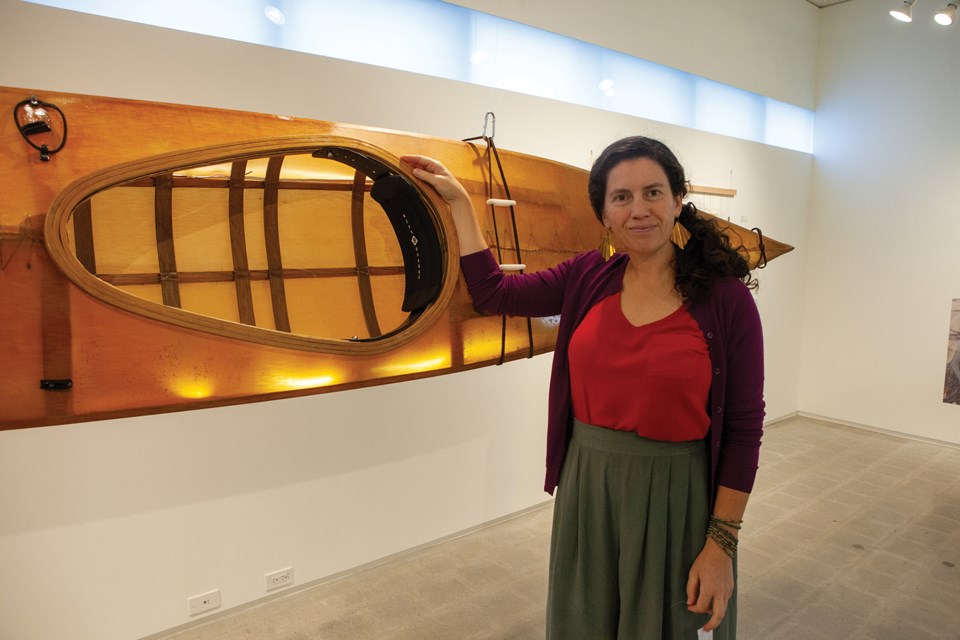A chance encounter with a kayak in downtown Gibsons helped carry an artist from B.C.’s southeast down one the world’s most industrialized waterways.
Claire Dibble opened her exhibition In An Altered Landscape during a reception at the Gibsons Public Art Gallery on Nov. 4. It is the Golden-based mixed media artist’s Sunshine Coast debut, and the most extensive representation yet of her three-month journey down the Columbia River in 2019.
Dibble recalled her first visit to Gibsons, during a day trip from Pasley Island. Outside Mike’s Gelato shop she spotted a skin-on-frame kayak atop a vehicle. As it glinted in the sunshine, she initially mistook it for oversize artwork.
“I was struck,” Dibble said. “I thought it was the most beautiful sculpture I had seen — on top of a roof, anyway.” When she decided to paddle the Columbia’s 2,000-kilometre length to test her theory that true communion with nature can occur even in landscapes affected by human industry, she recalled the sight of the resplendent watercraft. “Wow,” she thought, “I get to build one of those sculptures.”
The result of Dibble’s construction efforts — assisted by her father, a career boatbuilder from Maine — is displayed alongside the artwork that flowed from its journey: a sleek 14-foot kayak fashioned from Western red cedar and white oak.
“Coming from a boat-building family,” Dibble said, “I had an appreciation for water, for form, for design. There was a lot of drawing on napkins that happened around the kitchen table.”
Over the last decade, Dibble’s solo exhibitions in communities overshadowed by the Purcell and Rocky mountain ranges have considered the relationship between nature and its inhabitants. During her transit of the Columbia River, she captured impressions and imagery while first attending to the immediate priorities of self-propelled travel.
“It was about getting from Point A to B and making sure the gear was functioning,” said Dibble. “I spent a lot of time noticing what was happening around me, listening and looking.”
The flow of the Columbia is interrupted by 14 dams and is the subject of ongoing treaty negotiations between Canada and the United States. In digital works like Toward Open Water, Dibble imposes Venn-like orbs over the river surface to suggest overlapping commercial interests. The 16 fabric panels of Stilled Waters — chiffon imprinted with pastel-rich imagery — are translucent, challenging viewers to see the river for the trees.
A cedar stump (Extracted) that Dibble pulled from the Kinbasket Reservoir is suspended in mid-air, venerating the chainsaw-scarred trunk. An array of components from the kayak itself (Sum of its Parts) offer a reminder of delicate complexities that contribute to graceful systems.
“Art is how I understand the world, how I process things,” said Dibble. “With any number of issues that are going on in our world, if we have an opportunity to view it from a slightly different angle than what might show up on a newscast, it generates more curiosity and people want to find their own way of tapping into an understanding.”
In an Altered Landscape, which blends video, photography, textiles and other mediums, remains on display at the Gibsons Public Art Gallery until Nov. 26.





.png;w=120;h=80;mode=crop)